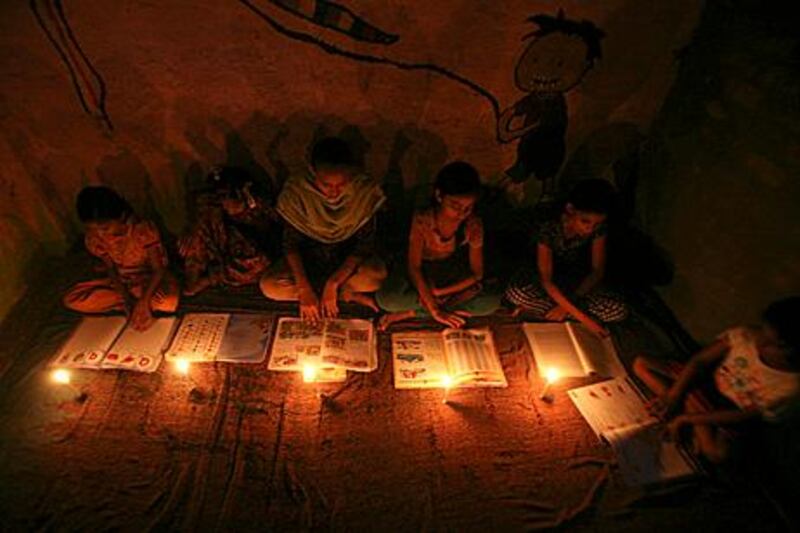NEW DELHI // India's energy crisis spread over half the country today when three of its regional grids collapsed, leaving more than 600 million people without government-supplied electricity in one of the world's biggest-ever blackouts.
Hundreds of trains stalled across the country and traffic lights went out, causing widespread traffic jams in New Delhi.
Electric crematoria stopped operating, some with bodies half burnt, power officials said.
The massive failure – a day after a similar, but smaller power failure – has raised serious concerns about India's outdated infrastructure and the government's inability to meet its huge appetite for energy as the country aspires to become a regional economic superpower.
Sushil Kumar Shinde, the energy minister, blamed the new collapse on states taking more than their allotted share of electricity.
"Everyone overdraws from the grid. Just this morning I held a meeting with power officials from the states and I gave directions that states that overdraw should be punished," he said.
"We have given instructions that their power supply could be cut."
The outage in the eastern grid came just a day after India's northern power grid collapsed for several hours. Indian officials managed to restore power several hours later, but at 1.05pm (11.35am UAE) today the northern grid collapsed again, said Shailendre Dubey, an official at the Uttar Pradesh Power Corp in India's largest state.
About the same time, the eastern grid failed as well, said SK Mohanty, a power official in the eastern state of Orissa. The two grids serve about half India's population.
In West Bengal, express trains and local electric trains were stopped at stations across the state of West Bengal on the eastern grid.
Crowds of people thronged the stations, waiting for any transport to take them to their destinations.Chief Minister Mamata Banerjee said it would take at least 10 to 12 hours to restore power and asked office workers to go home.
"The situation is very grave. We are doing everything to restore power," Manish Gupta, the West Bengal power minister, said.
Traffic lights went out across New Delhi. The city's Metro rail system, which serves about 1.8 million people a day, immediately shut down for the second day in a row. Police said they managed to evacuate Delhi's busy Barakhamba Road station in under half an hour before closing the shutters.
SK Jain, 54, said he was on his way to file his income tax return when the Metro closed and now would almost certainly miss the deadline.
The new power failure affected people across 13 states — more than the entire population of the European Union. They raised concerns about India's outdated infrastructure and its insatiable appetite for energy that the government has been unable to meet.
India's demand for electricity has soared along with its economy in recent years, but utilities have been unable to meet the growing needs. India's Central Electricity Authority reported power deficits of more than 8 per cent in recent months.
The power deficit was worsened by a weak monsoon that lowered hydroelectric generation and kept temperatures higher, further increasing electricity usage as people seek to cool off.
But any connection to the grid remains a luxury for many. One-third of India's households do not even have electricity to power a light bulb, according to last year's census.





